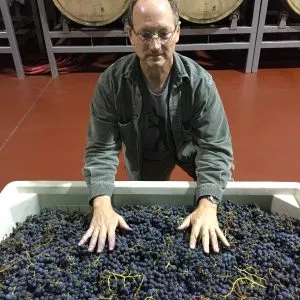I
t’s all about the terroir. Cain Winery and Vineyard is located in the hills high above the Napa Valley. The 542-acre property contours around an open, east-facing bowl, following the twists and turns of the Spring Mountain District. It ranges from 1,400 to 2,100 feet, revealing many distinct microclimates and soil profiles. It’s home to browsing deer, soaring hawks, wild turkeys, and iconoclastic winemakers like Chris Howell.
A graduate of the University of Chicago and the University of Washington, Howell is thoughtful, articulate, and devoted to expressing the terroir of the vineyard in his wines. Cain makes three Cabernet blends, each from unique vineyard sources and with a distinctive approach: Cain Cuvée, a smooth bistro wine; Cain Concept, a silky, age-worthy wine sourced from other Napa vineyards; Cain Five, the signature blend from the vineyard’s best lots.
I’ve written about him before regarding food, wine and travel in Napa and Sonoma. But now I’m looking for a more in-depth story. I’m not so much interested in wine scores or tasting notes, but in the process by which they are achieved. I’m looking for a full immersion in the wine making experience. I want to learn about it from the inside out. I’m hoping that understanding the process will lead to a fuller appreciation of the final product.
When I arrive at the winery at 5:30 a.m., Chris is waiting for me. We get into his white Ford Explorer and head down the steep, curving roads through Cain Vineyards. We park and get ready for the pick. I don a red safety vest, gloves, headlamp, and join the workers for the picking.
After discussing where to pick, Chris directs the crew. I hop up into the back of a pickup truck and head down the road. The other vineyard workers speak Spanish, only a little of it can I understand. When we arrive at the vineyard site, one of the man hands me a plastic picking bin. We begin working the rows, picking the grapes.
I start picking, using the clippers to cut the clusters. I try to move quickly and efficiently but I’m much slower than the others; it takes a while to figure out whether I need to clip a cluster or simply pluck it. It comes down to feel, judging the maturity of the fruit.
I fill up my first bin and hand it to the man driving the tractor with a tote behind it. He nods, dumps it into the tote, and hands it back to me. Then I move back down the row, walking ahead of the line of men and picking back toward them. My knees and neck ache from bending down to pick the grapes, but I keep going.
The men work quickly, joking and laughing, as they harvest the fruit. I try to keep up with them, disappearing into the work, testing the resistance of the grape stem for plucking or clipping, inhaling the fruity perfume of the grapes, and keeping the spider webs and straw out of my bin.
At the end of the row, I hand my bin over to be dumped again into the tote. I wipe the sweat out of my eyes, drink some water and look out over the Napa Valley. The sun is starting to come up. Tiny pinpricks of lights in St. Helena glimmer below us in the distance. It’s a moment to be savored, but I don’t have time to savor it. The men take off vests and headlamps and start picking another row.
I join in, moving down the row, selecting a spot with lots of clusters. The men move past me, kicking the empty bins down the row, passing the filled bins over the vines to the waiting tractor.
After we finish picking the block, Chris asks me to help to analyze the flavors of the next block. Like at Opus One, we pick randomly through the grapes, looking for the peak of flavor. I follow him as he tastes through the block, which varies according to the elevation and the exposure.
“You don’t want the process of winemaking to overwhelm the vineyard,” he says. “People will ask, ‘What’s the brix?’ but there are no set guidelines. Each wine has to have its own identity and that’s derived primarily from the vineyard. Our job is to get to know it and allow that expression to come through. For us, you could pick too soon and not express the vineyard. Or you could pick too late and the fruit would taste like overripe. The more we impose on the process, the less the individual vineyard will come through.”
We keep going, walking and tasting, making sure that the essence of the vineyard will come through in the finished wine.

